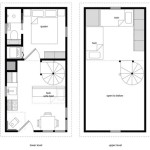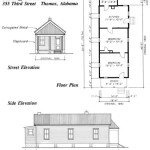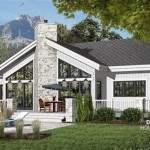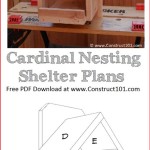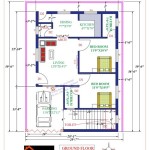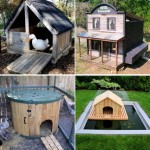Discover Your Dream Lakeside Haven: Explore House Plans Lake Tahoe
Lake Tahoe, a jewel nestled in the Sierra Nevada mountains, is renowned for its pristine beauty, crystal-clear waters, and stunning alpine scenery. This makes it a highly desirable location for building a dream home, a sanctuary that captures the essence of lakeside living. Before embarking on such a significant project, careful consideration must be given to the house plans, ensuring they not only align with personal preferences but also harmonize with the unique environmental characteristics of the region. Exploring various architectural styles, understanding the specific building regulations, and optimizing the design for both functionality and aesthetic appeal are crucial steps in realizing a successful lakeside haven.
The process of choosing the right house plan for a Lake Tahoe property requires a multi-faceted approach. It extends beyond simply selecting a design that is visually appealing; it mandates a thorough assessment of the land, the climate, and the lifestyle one intends to cultivate within the space. The selection process should integrate an understanding of the environmental considerations, code restrictions, and the architectural vernacular appropriate for this high-altitude environment. Attention to detail in these initial stages will directly contribute to the long-term satisfaction and value of the home.
Understanding Lake Tahoe's Unique Environmental Considerations
Lake Tahoe's fragile ecosystem necessitates environmentally conscious building practices. Strict regulations are in place to protect the lake's clarity and overall water quality. House plans must adhere to these regulations, often requiring specific measures to minimize environmental impact. These may include limitations on impervious surfaces, requirements for erosion control, and regulations regarding tree removal. Understanding and incorporating these regulations into the house plan from the outset prevents costly revisions and delays down the line.
One critical aspect is the control of stormwater runoff. Impervious surfaces, such as roofs and driveways, prevent rainwater from seeping into the ground, increasing the volume and velocity of runoff that flows into the lake. This runoff carries pollutants, such as sediment, oil, and fertilizers, which can degrade water quality. House plans must incorporate strategies for managing stormwater, such as permeable paving, rain gardens, and detention basins. These features help to filter pollutants and slow the flow of runoff, reducing its impact on the lake.
Moreover, the elevation and climate of Lake Tahoe present unique challenges. The region experiences significant snowfall and cold temperatures during the winter months. House plans must account for these conditions by incorporating features such as steep roof pitches to shed snow, adequate insulation to minimize heat loss, and durable materials that can withstand the elements. These considerations are vital for ensuring the longevity and energy efficiency of the home.
Furthermore, given Lake Tahoe's susceptibility to wildfires, fire-resistant building materials and landscaping are essential. Using materials such as concrete, stucco, and metal roofing can significantly reduce the risk of fire damage. Landscaping should be designed to create defensible space around the home, removing flammable vegetation and creating a buffer zone that can slow the spread of fire. Integrating these features into the house plan can provide peace of mind and protect the property from potential fire hazards.
Exploring Architectural Styles Suitable for Lake Tahoe
The architectural styles prevalent in Lake Tahoe often reflect the region's natural beauty and rustic charm. Traditional designs, such as mountain cabins and rustic lodges, blend seamlessly with the surrounding landscape. These styles typically feature natural materials like wood and stone, creating a warm and inviting atmosphere. However, contemporary designs are also gaining popularity, offering a modern aesthetic while still respecting the environment.
Mountain cabins often incorporate exposed timber beams, large windows to capture scenic views, and stone fireplaces to create a cozy ambiance. These designs typically emphasize functionality and comfort, providing a relaxing retreat for enjoying the outdoors. The use of natural materials helps to blend the home with its surroundings, creating a harmonious connection with nature. The scale of mountain cabins often suits smaller lot sizes and can be meticulously integrated into the landscape to minimize environmental disruption.
Rustic lodges, on the other hand, tend to be larger and more spacious, often incorporating multiple bedrooms, living areas, and outdoor spaces. These designs are ideal for entertaining guests and accommodating larger families. The use of massive timbers and stone creates a sense of grandeur and permanence, while large windows provide breathtaking views of the lake and mountains. The lodge style often incorporates elements of craftsmanship, showcasing the skill and artistry of the builders. Their larger footprint requires careful planning for site preparation and landscape integration to minimize environmental impact.
Contemporary designs in Lake Tahoe often feature clean lines, minimalist aesthetics, and sustainable materials. These designs emphasize energy efficiency and environmental responsibility, incorporating features such as solar panels, green roofs, and passive solar heating. Large windows and open floor plans create a seamless connection between indoor and outdoor spaces, maximizing natural light and views. Contemporary homes often use a palette of natural materials, such as wood, stone, and glass, to create a modern yet harmonious design. These designs often incorporate advanced energy-saving technologies and smart home systems, adding to their appeal for those seeking a modern and sustainable lifestyle.
Ultimately, the choice of architectural style depends on personal preferences, the characteristics of the site, and the desired lifestyle. It is important to consider the long-term implications of the design, including maintenance requirements, energy efficiency, and environmental impact. Consulting with an architect or designer who is familiar with the region's unique building conditions and regulations is essential for selecting a house plan that is both beautiful and functional.
Optimizing Functionality and Aesthetics in Lake Tahoe House Plans
Creating a successful house plan for a Lake Tahoe property requires a careful balance of functionality and aesthetics. The home should be designed to meet the needs of the occupants while also enhancing the beauty of the surrounding environment. This involves considering factors such as the layout of the rooms, the orientation of the building, and the selection of materials and finishes.
The layout of the rooms should be designed to maximize natural light and views. Living areas should be oriented towards the lake or mountains, providing breathtaking vistas from every angle. Bedrooms should be positioned to capture morning sunlight, creating a bright and cheerful atmosphere. The kitchen should be functional and efficient, with ample counter space and storage. The flow of the rooms should be intuitive and seamless, creating a comfortable and livable space. Outdoor living areas, such as decks and patios, should be integrated into the design, providing opportunities for enjoying the fresh air and stunning scenery.
The orientation of the building should be carefully considered to maximize energy efficiency. In winter, the home should be oriented to capture solar heat, reducing the need for artificial heating. In summer, the home should be shaded to minimize solar gain, reducing the need for air conditioning. This can be achieved through strategic placement of windows, overhangs, and trees. The orientation of the building should also take into account prevailing winds, which can be used to provide natural ventilation.
The selection of materials and finishes should be carefully considered to create a cohesive and aesthetically pleasing design. Natural materials, such as wood and stone, are often used to reflect the region's beauty and rustic charm. However, modern materials, such as concrete and steel, can also be used to create a contemporary aesthetic. The color palette should be carefully chosen to complement the surrounding landscape. Earth tones, such as browns, greens, and grays, are often used to create a sense of harmony with nature. The finishes should be durable and easy to maintain, ensuring that the home retains its beauty for years to come. Furthermore, the interior design should reflect the owner's personal style and preferences, creating a welcoming and comfortable space.
In conclusion, exploring house plans for a lakeside haven in Lake Tahoe involves a thoughtful process that considers environmental regulations, architectural styles, and the optimal balance of functionality and aesthetics. By carefully addressing these aspects, one can create a dream home that not only meets personal needs and preferences but also harmonizes with the unique beauty and environmental sensitivity of this remarkable region.

The Ultimate Guide To Designing Your Dream Lake House Inspired By Tahoe Edward George

The Ultimate Guide To Designing Your Dream Lake House Inspired By Tahoe Edward George

The Ultimate Guide To Designing Your Dream Lake House Inspired By Tahoe Edward George

The Ultimate Guide To Designing Your Dream Lake House Inspired By Tahoe Edward George

The Ultimate Guide To Designing Your Dream Lake House Inspired By Tahoe Edward George

The Ultimate Guide To Designing Your Dream Lake House Inspired By Tahoe Edward George

Lakefront Luxury Villa Zc636 Private Beach As The Back Yard Zephyr Cove Vrbo

Rustic Elegance Finding Peace In South Lake Tahoe Cabins Rnr Vacation Als

Luxury Scenic Lakeside Haven Kayaks Fire Pit Multi Deck Game Room Dock Kalkaska County Vrbo

Tahoe Lake House
Related Posts

